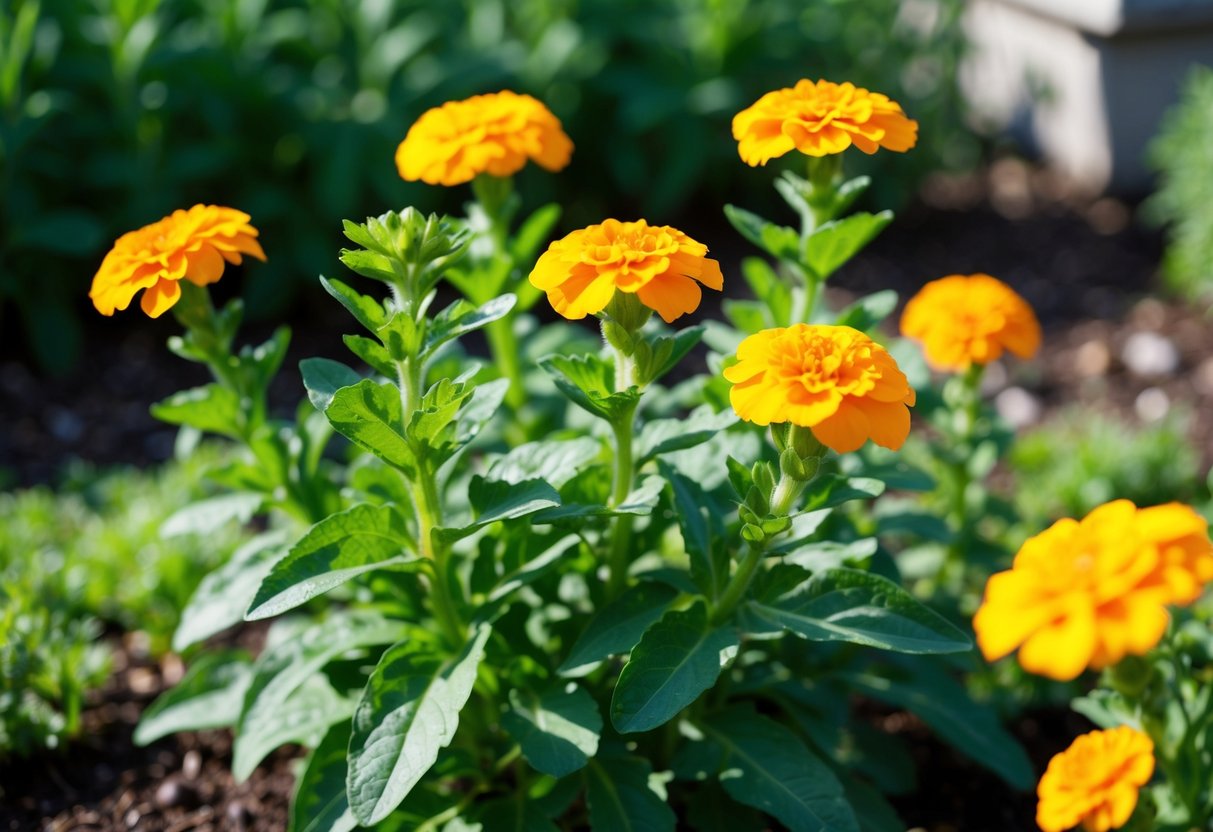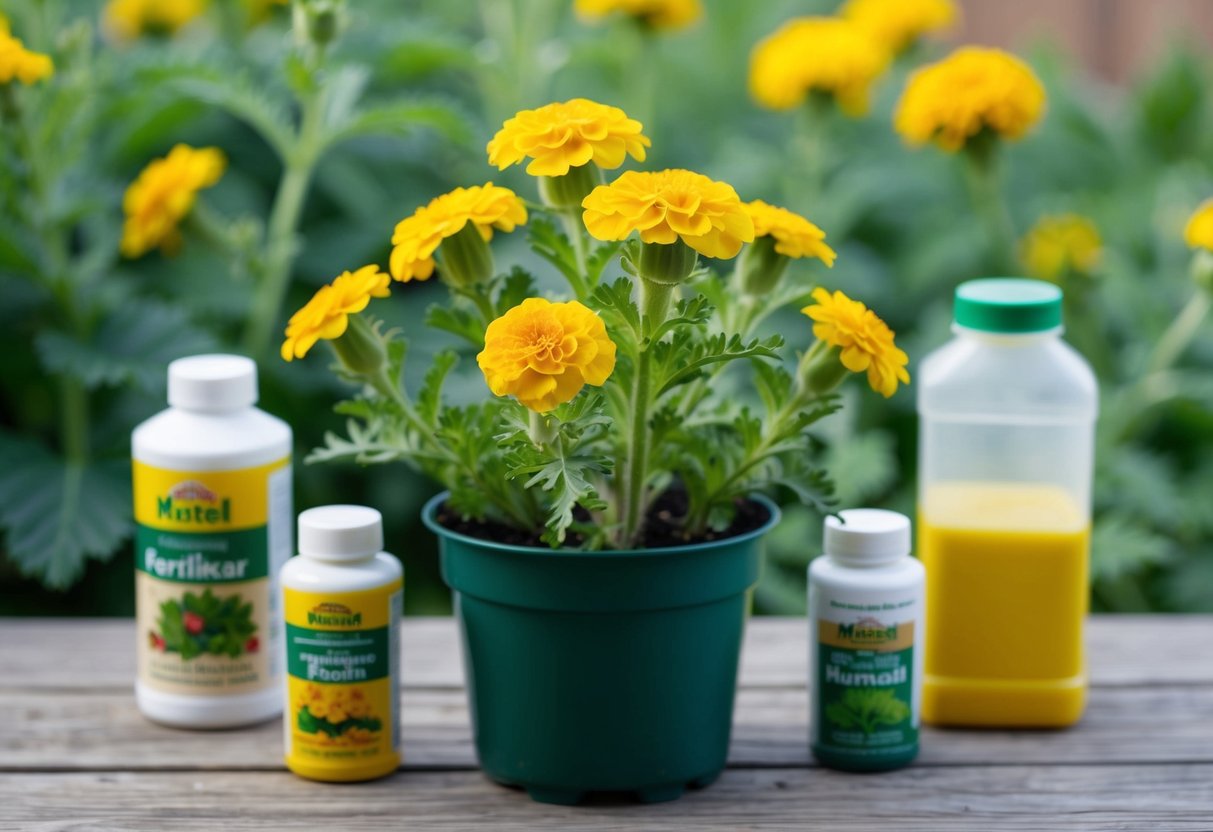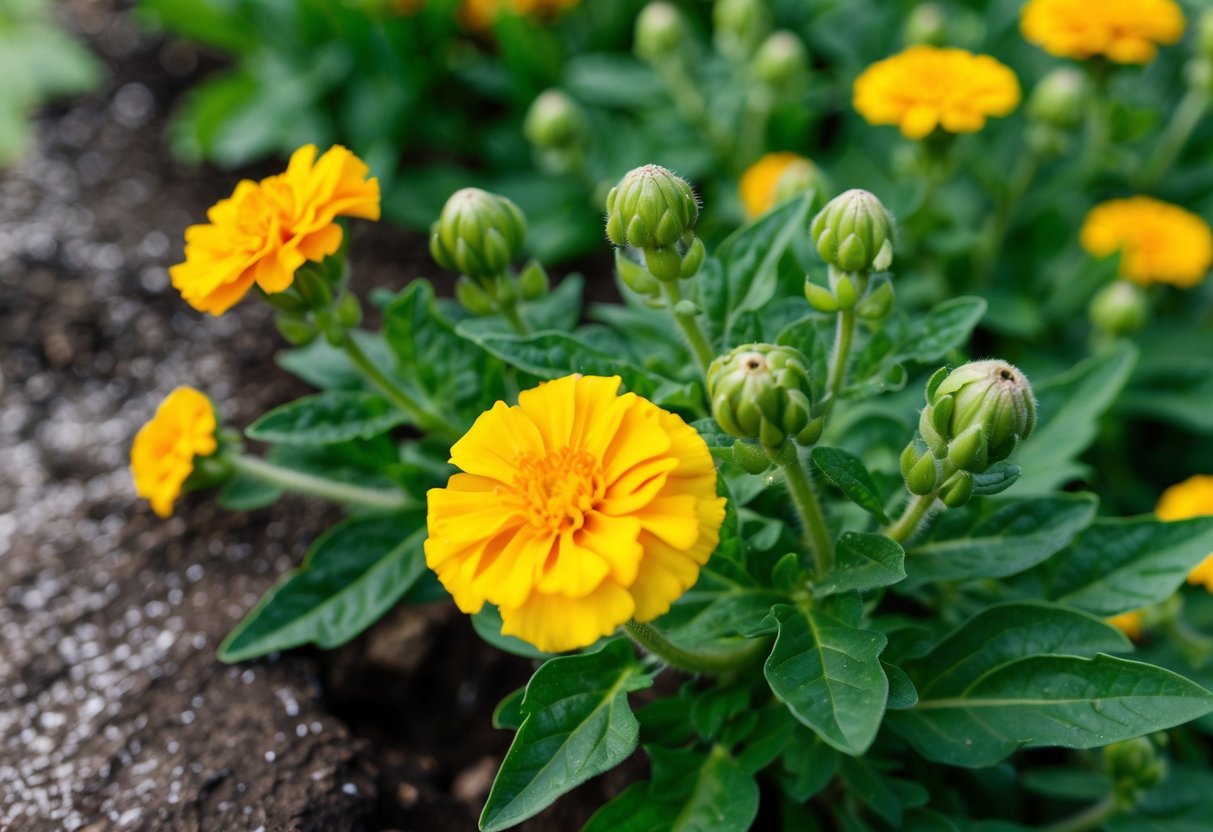Why Won’t My Marigolds Flower? Common Causes and Solutions
Marigolds are a favorite in many gardens because of their bright colors and long-lasting blooms. If you’re struggling with marigolds not flowering, you’re not alone. Marigolds won’t bloom for several reasons, such as insufficient sunlight, overly rich soil, and lack of deadheading. Each of these can be addressed with some simple changes, ensuring your garden bursts with color.

Sunshine is essential for marigolds. These vibrant flowers love the sun and need at least six hours of direct sunlight each day to thrive. When they don’t get enough light, you might see lots of green leaves but few beautiful blooms. If your marigolds aren’t flowering, adjusting their location could make a big difference.
Another common issue is the use of soil that’s too rich or overfertilized. While it might seem beneficial, it can lead to lush leaves but few flowers. Consider reducing the amount of fertilizer and ensuring proper watering to encourage blooming. Marigolds need just the right balance to show off their best!
Understanding Marigold Basics

Marigolds are popular garden flowers known for their vibrant colors and ease of care. Understanding the different varieties and the ideal conditions for growing marigolds can help ensure that they bloom beautifully in your garden.
Varieties of Marigolds
There are several types of marigolds, each with its own unique characteristics. African marigolds (Tagetes erecta) are known for their large, full blooms and tall stature. They can reach heights of about 3 feet and thrive in sunny conditions. In contrast, French marigolds (Tagetes patula) are smaller and bushier. They usually grow about 6 to 12 inches tall and produce an abundance of small, colorful flowers. French marigolds are more tolerant of cooler temperatures and can bloom for a longer period.
When choosing marigolds for your garden, consider the space and height requirements. African marigolds are great for borders or as a background plant. French marigolds work well in pots or as edging plants. Both varieties add bright colors and can be mixed with other flowers to create eye-catching displays.
Ideal Growing Conditions for Marigolds
Marigolds thrive in full sunlight. They require at least 6 hours of direct sun each day to produce vibrant blooms. In partial shade, your marigolds may grow foliage but produce fewer flowers. So make sure your marigolds get the right amount of sunlight they need.
Soil is also important for marigold growth. These plants prefer well-draining soil that is not too rich in nutrients. Avoid overfertilizing, as this can lead to lush leaves but fewer flowers. Marigolds are relatively drought-tolerant but appreciate regular watering, especially during dry spells. If you live in an area with high humidity, be cautious of over-watering to prevent root rot.
Factors Affecting Marigold Blooming

Marigolds need specific conditions to bloom well. These conditions include adequate sunlight, the right soil composition and pH level, and proper watering techniques. Each of these factors plays a crucial role in ensuring your marigolds produce the vibrant flowers you expect.
Sunlight and Sufficient Light
Marigolds thrive in full sunlight, requiring at least six hours of clear, direct light each day. Without enough sunlight, blooming will be sparse, and the plants might focus on growing green leaves instead. So, make sure to give your marigolds plenty of sunlight to help them bloom.
If you’re growing marigolds indoors, place them near a southern window that gets ample sunlight. Using grow lights can also help if natural lighting is limited.
Soil Type and pH
The type of soil and its pH balance can greatly influence how well your marigolds flower. They prefer well-drained soil with a pH around 6.0 to 7.0. Rich, overfertilized soil can lead to lush foliage but few flowers, as excessive nutrients might prevent blooming.
Testing your soil pH can be helpful. An affordable soil pH kit or meter can help you know if amendments are needed.
If the soil is too alkaline, consider adding organic matter like peat moss. For acidic soil, lime might be a good option to balance the pH, promoting better flowering outcomes.
Watering Techniques
Proper watering techniques are essential to encourage marigold blooms. It’s important to avoid overwatering, as soggy soil can cause root rot, preventing the plant from flowering.
Marigolds prefer soil that is moist but not waterlogged. So make sure to let the top inch of the soil dry out before watering again.
Check the soil regularly to ensure it is draining well. In times of excessive rain or high humidity, keep an eye on the soil moisture level and consider improving drainage to prevent issues.
Nutrition and Fertilization Practices

Ensuring your marigolds bloom beautifully involves proper nutrition and fertilization. Paying attention to the balance of nutrients, like nitrogen, phosphorus, and potassium, can help you achieve the best results.
The Role of Nitrogen
Nitrogen plays a big role in plant growth. It’s essential for leafy green foliage, but too much can prevent flowering. If you’ve used a fertilizer high in nitrogen, your marigolds might be more green than vibrant with flowers.
So, if you notice this, consider a balanced or low-nitrogen fertilizer. Signs of nitrogen deficiencies include yellowing leaves. Make sure to adjust the nitrogen levels properly to enhance the overall plant health without overdoing it.
Phosphorus and Potassium Needs
Phosphorus is crucial for flowers. A lack of it might result in fewer blooms. So, use a fertilizer that’s rich in phosphorus to encourage flowering. Look for terms like “bloom booster” on the label for the right mix.
Potassium helps marigolds resist disease and improve overall vigor. It supports strong root systems and healthy blooms. If your marigolds look withered, a boost of potassium could help. Make sure to give them regular fertilization during the growing season to ensure they get enough of these nutrients.
Common Pests and Diseases

Marigolds can fall victim to several pests and diseases that affect their growth and blooming. Knowing how to identify these problems early can help save your plants.
Identifying Pest Infestations
Marigolds often attract pests like aphids and spider mites. Aphids are tiny, green insects that gather on the undersides of leaves and stems. They suck sap, leaving behind a sticky residue known as honeydew. This can lead to sooty mold, which darkens your plant’s leaves.
Spider mites are also troublesome. They leave yellow or brown speckles on leaves. You may spot thin webbing as a sign of their presence. Japanese beetles might munch on marigold leaves, creating jagged holes. Slugs and snails can be seen at night, munching on leaves, too.
Regularly inspect your plants. Early detection is key to managing these pests. You can use simple solutions like spraying neem oil for mild infestations. For more stubborn pests, consider introducing natural predators like ladybugs to your garden for effective pest control.
Dealing with Diseases
Marigolds can suffer from diseases like powdery mildew and bacterial leaf spot. Powdery mildew shows up as white, powder-like spots on leaves. This can hinder photosynthesis and weaken your plants. Bacterial leaf spot, on the other hand, creates dark, water-soaked lesions on foliage.
Root rot is another concern, often caused by overwatering. So make sure to plant your marigolds in well-draining soil to prevent root rot. Too much water can lead to wilting and yellow leaves as the roots decay.
Inspect your plants consistently. Remove infected areas to prevent the spread of disease. You can use fungicides specifically designed for these issues, but ensuring good airflow and proper watering habits is also essential.
Caring for Marigolds

To keep marigolds healthy and blooming, it’s important to focus on regular pruning as well as managing heat and humidity. This can ensure a vibrant display of flowers throughout the growing season.
Pruning and Deadheading
Regular pruning helps maintain the shape and size of your marigold plants. You should also focus on deadheading, which involves removing spent blooms. This encourages your marigolds to keep producing flowers instead of going to seed.
Using clean and sharp scissors or shears, pinch off the dead blooms just above the next set of leaves. Removing yellowing leaves is also beneficial, as it redirects energy to healthy parts of the plant. This can help prevent marigolds from not flowering.
Managing Heat and Humidity
Marigolds thrive in warm temperatures but excessive heat can stress them. To prevent this, make sure your marigolds get enough water without overwatering. Too much water can cause root rot and humidity-related issues.
Try to water early in the morning or late in the evening to minimize evaporation and provide consistent moisture. In humid conditions, ensure good air circulation around the plants. If your marigolds have yellowing leaves, it could be due to excess water or humidity.







